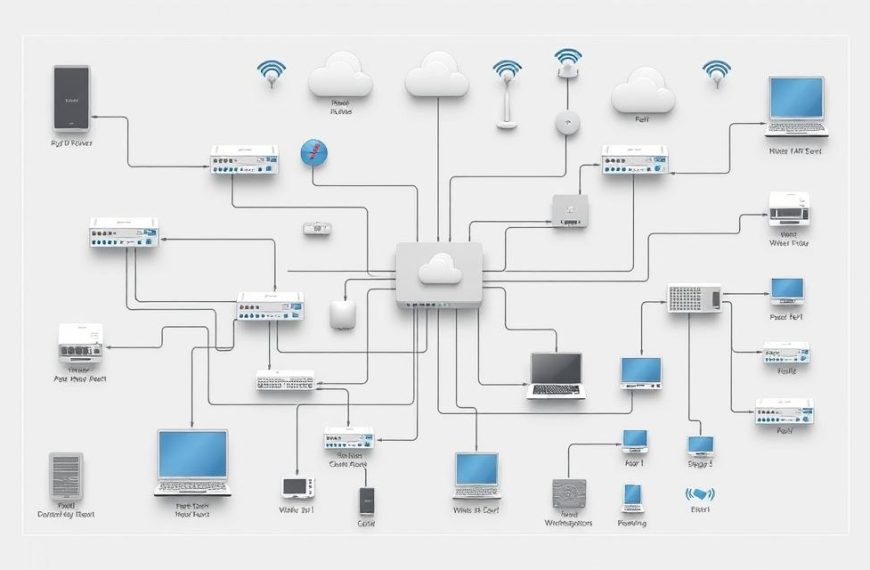Cryptocurrency represents a groundbreaking shift in how we think about money. As a digital currency, it operates on blockchain technology, ensuring secure and transparent transactions. Unlike traditional finance, it’s decentralized, meaning no single entity controls it.
The global market cap for crypto has surged to $2.4 trillion, showcasing its explosive growth. This decentralized nature offers unique advantages, such as enhanced security and freedom from government interference. For instance, El Salvador adopted Bitcoin as legal tender, highlighting its real-world potential.
However, it’s essential to note that the IRS treats cryptocurrency as taxable property in the U.S. This ensures compliance while navigating the evolving financial landscape. As adoption grows, understanding its benefits and risks becomes crucial for anyone exploring this innovative space.
Introduction to Cryptocurrency
Blockchain technology has paved the way for cryptocurrency to redefine how we exchange value. At its core, blockchain is an immutable distributed ledger that records all transactions securely and transparently. This technology eliminates the need for intermediaries, making it a game-changer in the financial world.
Unlike traditional banking systems, cryptocurrency operates on a decentralized network. This means no single entity controls the system, ensuring greater security and transparency. For example, Bitcoin, the first and most well-known cryptocurrency, relies on a network of miners to validate and record transactions.
There are three main types of cryptocurrency: utility tokens like Ethereum, transactional tokens like Bitcoin, and governance tokens. Each serves a unique purpose within the digital economy. Major corporations like JPMorgan have also embraced blockchain to enhance payment processing efficiency.
However, the environmental impact of Bitcoin mining has raised concerns. The process requires significant energy, leading to debates about sustainability. Despite this, the adoption of cryptocurrency continues to grow, offering a glimpse into the future of finance.
| Cryptocurrency | Type | Primary Use |
|---|---|---|
| Bitcoin (BTC) | Transactional | Peer-to-peer payments |
| Ethereum (ETH) | Utility | Smart contracts |
| XRP | Transactional | Cross-border payments |
What Are the Benefits of Cryptocurrency?
The rise of digital assets has introduced innovative solutions to global financial challenges. From decentralization to cost-effective transfers, cryptocurrency offers unique advantages that address modern economic needs. These features make it a compelling alternative to traditional financial systems.
Decentralization: Freedom from Central Control
One of the most significant advantages of cryptocurrency is its decentralized nature. Unlike traditional banking systems, digital currencies operate without a central authority. This ensures greater transparency and reduces the risk of manipulation.
For example, Bitcoin’s network relies on a distributed ledger maintained by miners worldwide. This setup eliminates the need for intermediaries, fostering trust and security. Decentralization also empowers individuals by giving them full control over their assets.
Lower Transaction Fees: Cost-Effective Transfers
Traditional financial systems often charge high fees for cross-border transactions. Cryptocurrency, on the other hand, enables cost-effective transfers with minimal fees. This is particularly beneficial for international payments and remittances.
Ethereum’s shift to proof-of-stake has further reduced energy costs, making transactions even more affordable. Lower fees not only save money but also make financial services accessible to a broader audience.
Inflation Protection: A Hedge Against Economic Instability
Cryptocurrency can serve as a hedge against inflation, especially in economies with unstable currencies. Bitcoin’s scarcity—capped at 21 million coins—contrasts sharply with fiat money printing, which often leads to devaluation.
For instance, Bitcoin appreciated by 150% against the Turkish lira from 2022 to 2024. Stablecoins pegged to commodities or inflation indexes also offer inflation protection. However, volatility remains a limitation, reducing its effectiveness as a short-term hedge.
Institutional adoption, such as MicroStrategy’s investment in Bitcoin, highlights its growing role as a store of value. As the market evolves, cryptocurrency continues to offer innovative solutions for preserving wealth in uncertain times.
Cryptocurrency and Financial Accessibility
Access to financial services is expanding globally through innovative digital solutions. Over 1.4 billion adults worldwide remain unbanked, according to the World Bank. Cryptocurrency offers a unique opportunity to bridge this gap, providing financial accessibility to underserved populations.
Unlike traditional banking systems, which often require extensive documentation and KYC processes, crypto wallets only need a smartphone and internet access. This simplicity makes it easier for individuals in developing markets to manage their funds securely.
In countries like India, where UPI has revolutionized payments, cryptocurrency adoption is still debated. However, mobile-first solutions are gaining traction. For instance, the Philippines’ GCrypto and Nigeria’s Paxful have successfully integrated digital currencies into everyday transactions.
Regulatory barriers remain a challenge in some jurisdictions. Yet, the potential for cryptocurrency to empower the unbanked is undeniable. By leveraging decentralized technologies, financial inclusion is becoming a reality for millions.
Transparency and Security in Cryptocurrency Transactions
Digital transactions now benefit from unprecedented security thanks to blockchain innovations. Every action is recorded on a public ledger, ensuring full transparency. This system prevents fraud while empowering users to verify assets independently.
Blockchain: A Transparent Ledger
Blockchain’s immutable design means once data is added, it cannot be altered. For example, the $600M Poly Network hack was reversed through white-hat collaboration. Such transparency builds trust in decentralized systems.
Institutions increasingly adopt multi-signature wallets, requiring multiple approvals for transactions. This adds layers of protection for large holdings. Emerging standards like SOC 2 further ensure exchanges meet rigorous security benchmarks.
Cryptography: Ensuring Transaction Security
SHA-256 encryption safeguards Bitcoin transactions, making them nearly unhackable. Users control access via paired keys:
- Public keys: Shared addresses for receiving funds.
- Private keys: Secret codes to authorize transfers.
Cold storage (offline wallets) protects assets from online threats. However, quantum computing could challenge current encryption. Insurers now offer policies for crypto custodians, reflecting growing institutional confidence.
| Wallet Type | Security Level | Best For |
|---|---|---|
| Hot Wallet | Medium | Frequent traders |
| Cold Wallet | High | Long-term holdings |
| Multi-Sig | Very High | Institutions |
Cryptocurrency as an Investment Opportunity
Investing in digital assets has become a popular way to diversify portfolios. The potential for high returns attracts both individual and institutional investors. However, the market is known for its volatility, making it essential to understand the risks involved.
High Returns: The Allure of Cryptocurrency Investments
Cryptocurrency has delivered impressive gains for early adopters. Bitcoin, for instance, surged from $1,000 in 2017 to over $60,000 in 2021. Such returns have drawn attention to digital assets as a viable investment class.
However, these gains come with significant risk. The Terra/LUNA collapse in 2022 erased $40 billion in value, highlighting the unpredictability of the market. Investors must weigh the potential rewards against the possibility of substantial losses.
Market Volatility: Understanding the Risks
Cryptocurrency volatility is driven by factors like liquidity, news sensitivity, and market maturity. For example, Bitcoin experienced a 70% drawdown in 2022, while the CME Bitcoin Volatility Index hit a record 150 in 2024.
To manage risk, investors can adopt strategies like dollar-cost averaging. This approach reduces the impact of price fluctuations by spreading investments over time. Additionally, avoiding excessive leverage in crypto derivatives trading can prevent catastrophic losses.
Regulatory changes also impact price stability. Clear guidelines can boost confidence, while uncertainty may lead to sharp declines. Staying informed about legal developments is crucial for long-term success.
Challenges and Risks of Using Cryptocurrency
Navigating the world of cryptocurrency comes with its own set of challenges. While it offers innovation and freedom, users must be aware of potential pitfalls. From regulatory hurdles to security vulnerabilities, understanding these risks is crucial for safe adoption.
Regulatory Uncertainty: The Legal Landscape
The legal framework for cryptocurrency remains inconsistent across jurisdictions. In the U.S., the SEC and CFTC have differing views on digital assets. This lack of clarity creates challenges for businesses and investors alike.
For example, some countries ban cryptocurrency entirely, while others embrace it. This regulatory patchwork complicates cross-border transactions and limits adoption. Staying informed about local laws is essential to avoid legal risks.
Security Risks: Protecting Your Digital Assets
Cryptocurrency’s decentralized nature doesn’t eliminate security threats. Between 2021 and 2023, DeFi platforms lost over $4 billion to hacking incidents. Attack vectors include phishing scams and smart contract vulnerabilities.
Hardware wallets offer enhanced protection by storing private keys offline. However, even these aren’t foolproof—Ledger’s 2020 breach exposed 270,000 emails. Proper seed phrase management is critical for asset recovery.
Emerging protocols like Ethereum’s ERC-4337 enable social recovery, adding an extra layer of safety. While insurance options exist, coverage limitations mean users must remain vigilant.
Cryptocurrency in Everyday Transactions
Digital currencies are reshaping how we handle everyday financial transactions. From buying coffee to paying bills, crypto is becoming a practical tool for routine activities. This shift is driven by its efficiency, security, and global accessibility.
Cross-Border Payments: Simplifying International Transfers
Cryptocurrency has revolutionized cross-border payments, making them faster and more affordable. Traditional methods often involve high fees and delays, but digital currencies eliminate these barriers. For example, Bitcoin transactions are completed in minutes, regardless of location.
Overstock.com processed $3 million in crypto payments in 2023, showcasing its growing acceptance. This trend is particularly beneficial for remittances, where lower fees can significantly impact users. Platforms like BitPay and Coinbase Commerce facilitate seamless international transfers.
Retail Adoption: Cryptocurrency in the Marketplace
The retail sector is embracing digital currencies, with over 25,000 Shopify merchants now accepting crypto. This adoption is driven by consumer demand for flexible payment options. Miami’s “Bitcoin Beach” is a prime example, where local businesses thrive on crypto transactions.
However, challenges like consumer protection and tax reporting remain. Merchants must navigate accounting complexities and ensure compliance with local regulations. Despite these hurdles, the benefits of crypto adoption are clear.
| POS Solution | Features | Best For |
|---|---|---|
| BitPay | Multi-currency support, instant settlements | Global businesses |
| Coinbase Commerce | User-friendly interface, secure transactions | Small to medium enterprises |
For more insights on the advantages of cryptocurrency, visit Forbes Advisor.
Conclusion
Cryptocurrency continues to redefine the financial landscape with its decentralized structure and cost-efficient transactions. Over 500 million global users in 2024 highlight its growing adoption. Institutions like Visa are investing heavily in crypto infrastructure, signaling confidence in its future.
However, challenges remain. Market volatility and regulatory uncertainty pose significant risks. The IMF’s 2024 Global Financial Stability Report warns of potential instability. Yet, innovations like ZK-proofs and Layer 2 solutions are addressing scalability and security concerns.
As a financial investment, cryptocurrency offers both opportunities and pitfalls. Its role in the global economy is evolving, blending traditional finance with decentralized technologies. Balancing its benefits and risks is key to navigating this dynamic space.












